Europe is facing its worst year since WW2!
“1992 is not a year on which I shall look back with undiluted pleasure. In the words of one of my more sympathetic correspondents, it has turned out to be an annus horribilis.”- Queen Elizabeth II, November 24th, 1992.
1992 was the year that jolted the UK’s Royal Family to its essence. The various scandals, the separation of Prince Charles and Diana, the Divorce of the Queen’s daughter, the separation of the Queen’s second son and the fire in Windsor Castle wobbled the royal family.
2022 is turning about to be the “Annus Horribilis” for Europe. Years of negligence by European leaders and preposterous energy policies have led Europe to a cost of living crisis. Furthermore, the continent is witnessing the worst drought in the last 500 years, which has exacerbated the troubles.
Lake Garda, Italy. Source: AP Photo/ Antonio Calanni
Europe was on a secular decline in the past decade due to worsening demographics, minimal growth and the migration of manufacturing units to China and other emerging markets. Moreover, the war has further accelerated the “Japanification” of Europe.
Let us dig deep and understand Europe’s precarious position today.
The Power Mess!
Undoubtedly, the worst hit sector has been the power sector. As Putin halted the natural gas supplies to the continent, electricity prices exploded. The forward baseload power prices have seen insane moves: Rising by 400%-800% since the war broke.
While everybody in the last few months was worried about Germany, the real price action happened in France. Germany was the culprit for the media as it is the most dependent on Russian gas to heat its homes. However, French prices crossed 2000 EUR/MWh due to its reliance on nuclear power (equivalent to $1100 /b of crude!!). Almost 70% of the power produced in France is from nuclear energy.
The ageing nuclear plants require maintenance shutdowns; furthermore, the river water is necessary to cool the plants. The heatwave/drought in France and the maintenance shutdowns are a double whammy for the EDF (the French utility company responsible for operating nuclear plants), as 26 of the 57 French nuclear reactors are undergoing “emergency” maintenance after the discovery of cracked pipes. As a result, France, a net exporter of electricity for the better part of the year, has been importing electricity from other countries in Europe, pressuring the grid (can lead to concerns about the grid stability) and aggravating the power crisis in Europe.
According to EDF , the power output this year would be the lowest in three decades.
The drought has been playing havoc not only on nuclear power but also on hydropower. The low water in the reservoirs has forced Norway ( a power exporter) to prioritise replenishing its parched reservoirs instead of generating hydroelectricity.
90% of Norway’s power production comes from 1700 hydroelectric plants! Almost 20% of the power generated in Norway is exported to other parts of Europe.
Italy’s top utility Enel had to shut multiple hydro sites due to low water levels in the rivers. All in all, 20% of the hydro output has been hit in Western Europe due to the worst drought in the last 70 years.
The problems continued to galore for the Germans, who shifted to coal power plants as an alternative to natural gas. The water level at the Rhine river is approaching the levels last seen in 2018 and will soon touch the levels (30 cm) seen as “uneconomical to sail”. Rhine river being unpassable will be catastrophic for the coal-based power plants, as most of the coal is transported via the Rhine river.
Even the UK has not been spared from the skyrocketing power prices. In the UK, where the median monthly salary is £2115, the power bills will rise to roughly £400 per month by January (more than a 100% surge). The power bills will account for roughly 20% of a median household’s income!
The industries are also bearing the brunt of higher power prices and lower gas availability. Chemical industries, fertiliser units and heavy metal industries that use gas for their operations are curtailing operations. We are also witnessing the start of the closure of industries.
The latest casualty is one of the largest zinc smelters in the Netherlands, the Budel Smelter run by the Trafigura group. They have decided to close the smelter next month due to the energy crisis.
Furthermore, Norsk Hydro-owned Slovalco aluminium facility in Slovakia has decided to close the primary aluminium production at the plant due to “high electricity prices.”
The utilities across Europe are falling like a pack of cards. Uniper in Germany and EDF in France have reported billions of euros in losses and are on the verge of nationalisation (France has already announced the “denationalisation” of EDF).
Well, if you think only the power situation was dire, you would be intrigued to read about the alarming rise in food prices.
The Food Inflation And The Agri Crisis!
First, it was the rise of commodity prices from wheat to sugar post the pandemic, and now the electricity price increase due to higher energy costs is leading to an enormous surge in food inflation.
The UK witnessed 9% food inflation which is the highest since 2009. Higher grocery bills are adding misery to the lives of already battered consumers.
In the UK, electricity prices aren’t capped for businesses as for households. As a result, electricity costs have risen in the past year between 45% and 122% in the past year, depending on company size, and gas prices between 131% and 185%. If the situation worsens with the onset of winter, it is expected that the “energy intensive” food factories will have no option but to shut down (due to gas rationing), further worsening the crisis.
The worst drought in 500 years is also playing havoc on the agriculture output. As the rivers dry across Europe, the yields across various crops are expected to crash. As per S&P Global Commodity Insights:
EU corn production is expected to be 12.5 million tons below last year, and sunflower production is projected to be 1.6 million tons lower.
The concerns are also mounting for the livestock owners. Some European farmers have resorted to tap water for their livestock as the ponds and streams dry. The lack of grass has led the farmers to turn to winter feed for the UK Farmers.
Furthermore, in the last two months, we have seen horrifying images of farmer protests emerge across Europe. The government policy in the Netherlands to reduce “nitrogen pollution” is expected to have disastrous consequences for the farm sector.
As per the Dutch Government’s own estimates, 11,200 farms out of the roughly 35,000 dedicated to dairy and livestock would close under its policies; 17600 farmers would have to reduce livestock, and total livestock would need to be reduced by one-half to one-third.
Even the Spanish farmers have joined their Dutch peers to protest against the draconian policies of the “democratic” elected governments of these countries.
The energy crisis is spilling over to the food crisis, and the government policies threaten to aggravate the crisis further. Tragically, the developed world is seeing the problems that emerging markets face.
Cost of Living Crisis!
When one sees the gargantuan rise in food and energy prices, one wonders what is transpiring to the wages. Well, folks, unions in Europe are fighting for an 8% raise. The astonishing fact is that since the “official” CPI print is less than 8%, there is stiff resistance from the employment organisations.
As the cost of living outpaces the wage growth, Europe is heading to “energy poverty”, according to some market participants. The situation is so dire that in the UK, the food and energy costs are expected to be 50% of the total income of an average household.
Furthermore, as the BoE aggressively raises rates, the mortgage rates are hitting the roofs. The BoE is expected to raise rates further next month, which might take the BBA mortgage rates to the highest since the GFC.
Together, the energy, food and mortgage shocks have led to a crash in consumer confidence. The saving rates have plunged, and as consumption sees a massive fall, the continent might be heading to a recession of epic proportions.
Conclusion!
Undoubtedly, 2022 will be known in history as the “Annus Horribilis” for Europe.
The tumultuous year is also marked by the Euro turning to parity with the dollar, a 20-year low. The sharp depreciation in currency due to inaction by the ECB is certainly not helping as most of the energy is imported into the continent.
However, financial markets are showing an uneasy calm.
Is this the calm before the perfect storm?
Most probably, Yes, especially if the energy situation worsens going forward. Note that the futures market is pointing out to be a painful 2023 and even 2024.
Annus Horribilis! was originally published in DataDrivenInvestor on Medium, where people are continuing the conversation by highlighting and responding to this story.

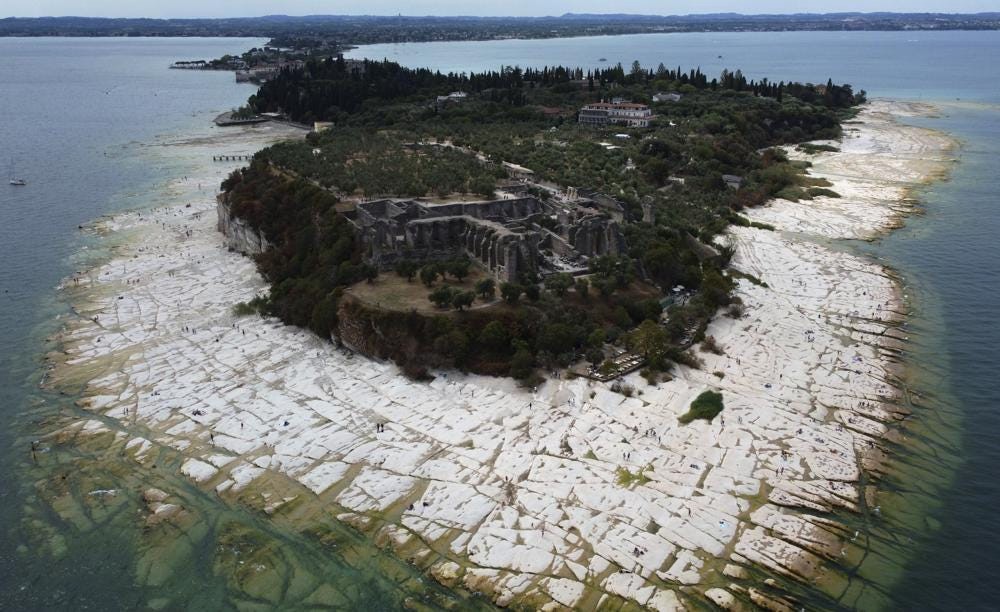
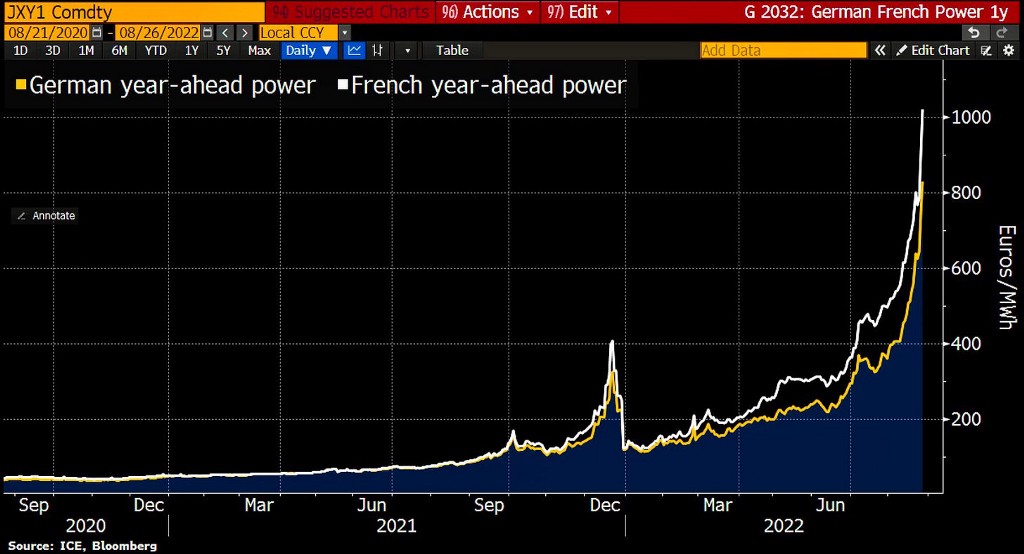
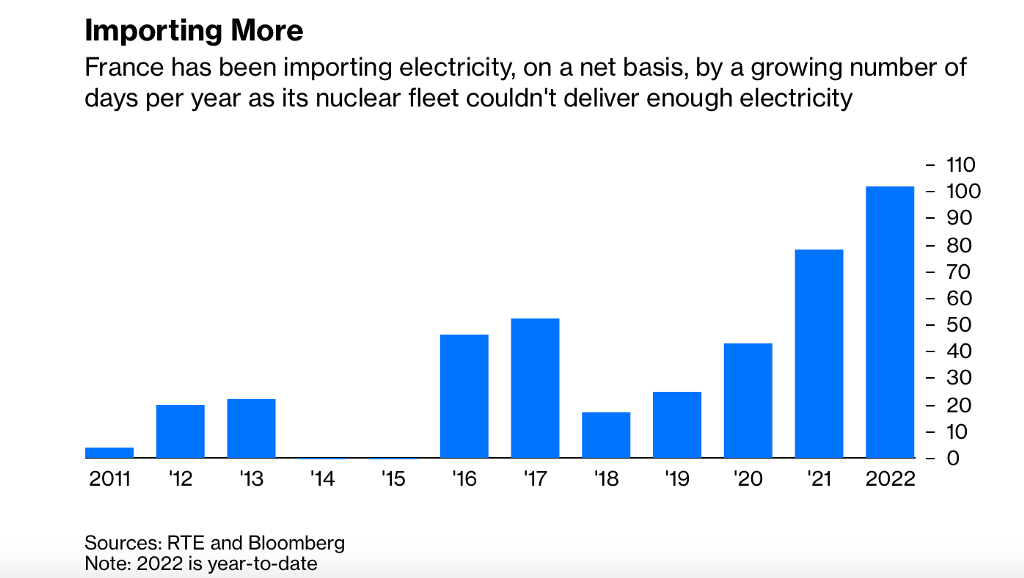
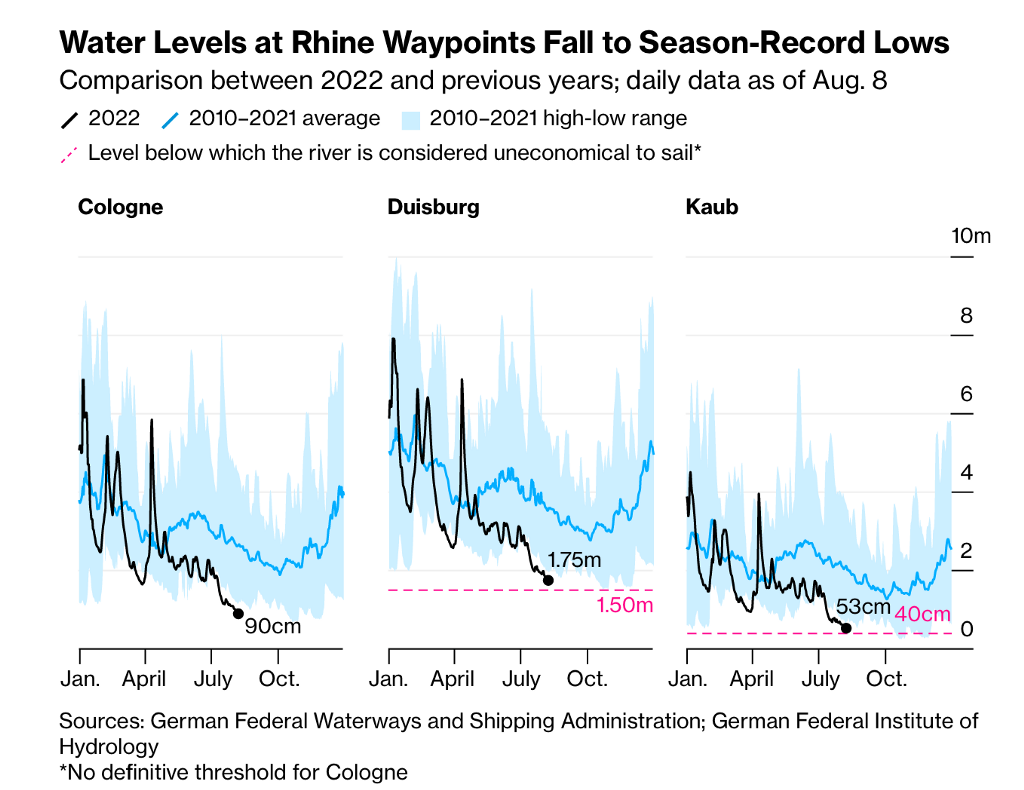
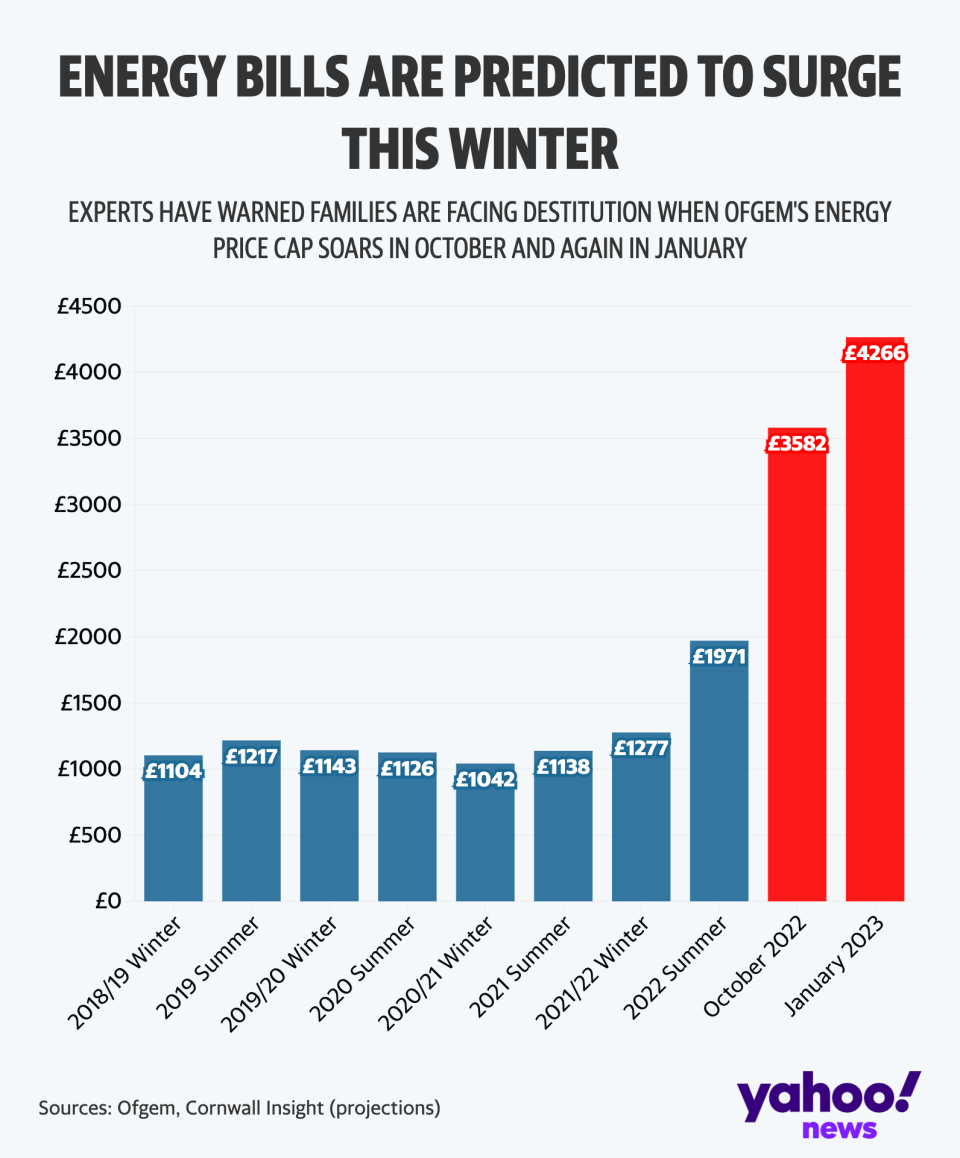
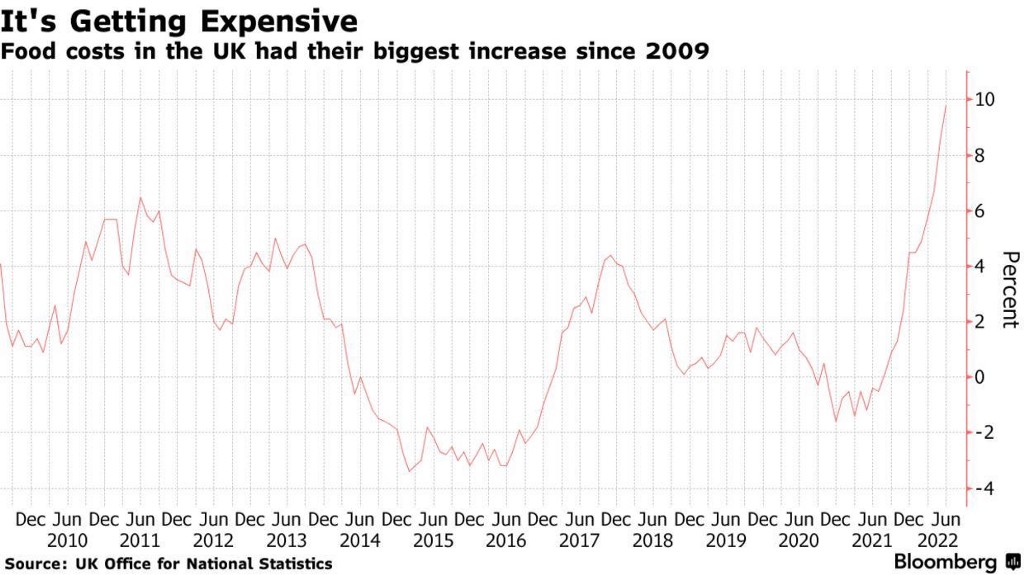
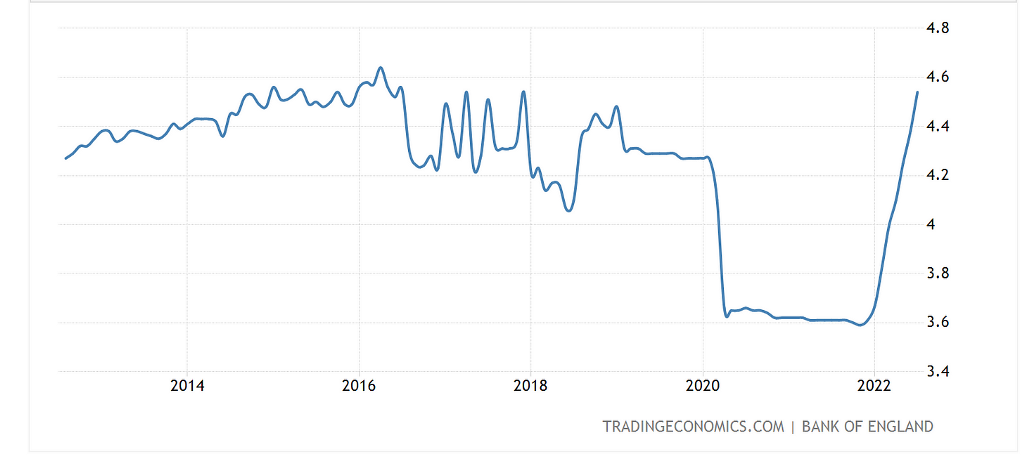
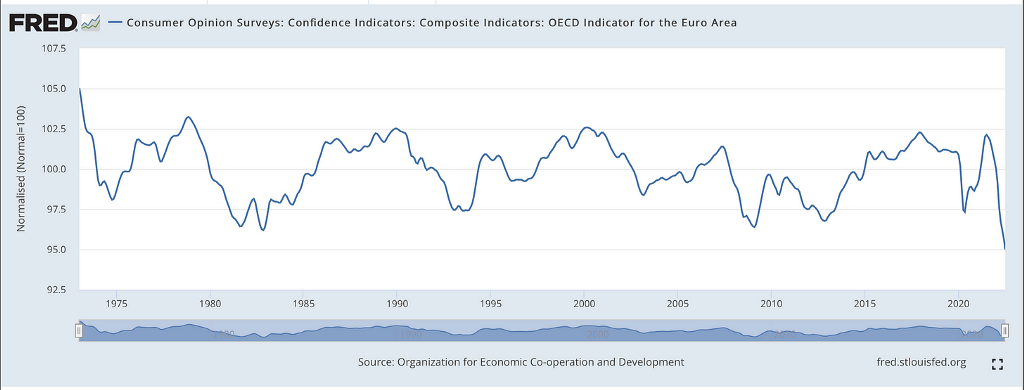
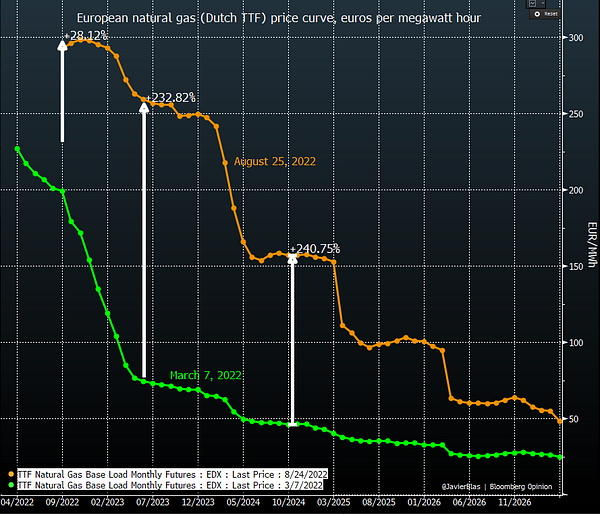
Comments